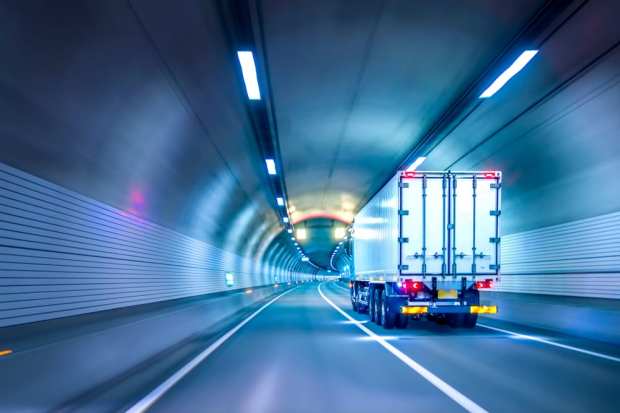How Cargomatic Leverages Geocoding To Meet Pandemic-Driven Supply Chain Challenges

Eighty-four percent of consumers say they would abandon a merchant after just one failed delivery attempt. In The Digital Consumer Onboarding Tracker, Sunil Sharma, chief product and technology officer at online logistics marketplace Cargomatic, discusses how geocoding is key to streamlining last-mile delivery accuracy.
The pandemic’s onset triggered a mass migration of consumers to online channels to meet their everyday shopping needs, with merchants following suit. Retailers that mainly depended on brick-and-mortar foot traffic had to quickly mobilize distribution services to get their goods to customers. This shift resulted in a massive redeployment of transportation solutions, including last-mile infrastructure and the resources for ensuring its success.
Los Angeles-based logistics online marketplace Cargomatic is one firm that saw supply chain conversion accelerate immediately with the pandemic-induced surge in online sales.
“Transformation that would have unfolded over five years was compressed into less than five months,” said Sunil Sharma, Cargomatic’s chief product and technology officer, in a recent interview with PYMNTS. “The shelter-in-place economy drove companies that had never had a robust last-mile delivery network to adopt entirely new fulfillment models and incorporate them at scale rapidly to be a viable business amid the pandemic.”
Perhaps the best-known example, he said, was the infamous toilet paper shortage that occurred in the first several months. The nation was never truly in danger of running out, yet it took time for manufacturers to reconfigure their supply chains for the increased demand.
Production, distribution and transportation networks were not designed to accommodate such sudden shifts in demand across formerly predictable markets, Sharma said. Local freight networks serving last-mile delivery, therefore, had to serve new fulfillment networks and shuffle resources between existing channels.
“The pandemic placed a spotlight on the importance of short-haul, local freight moves between warehouses … and retail facilities to be used as triage for home delivery,” he said.
Geocoding’s Accuracy And Insights
Technologies such as geocoding — which converts addresses to latitude and longitude coordinates — have become crucial in improving the delivery experience, Sharma said. Cargomatic, which connects shippers looking to move freight with drivers from local trucking companies and owner-operators, leverages geocoding data to connect them and provide delivery tracking. The data allows the online platform and mobile app to connect shippers with drivers based on location proximity and offer pickup and delivery appointment windows.
“Geocoding is a critical part of the plumbing, and final-mile delivery would be incredibly hard to handle without it,” Sharma said. “Today’s shopper expects to know where their order is for every step of the shipment’s journey, and expects proactive communication for any deviation from the plan.”
Geocoding not only enables standardization of location data, but also improves location intelligence for the validation of pickup and delivery addresses that drives accurate dispatching and billing, he noted. The use of geofencing, a virtual perimeter for a real-world location, is another critical component of a high-performance delivery network, according to Sharma. Geofencing was designed for proactive, real-time pickup and delivery notification and location coordination, reducing driver wait, improving turnaround time and lowering the cost for shippers.
“We were able to take the best practices we learned from our work with several white-glove, home-delivery customers and apply them to companies that weren’t as far along on their journey to creating true omnichannel experiences,” Sharma said. “By offering shippers access to a national network of professional, vetted drivers, we’ve built a one-stop-shop that [addresses] many of the headaches associated with a shift in demand before it occurs.”
Route Optimization
Standardizing such location data is critical to streamlining the supply chain. It also helps to tighten routes, supporting accurate pickup and delivery while reducing wasted miles and improving asset use. Optimizing routes with geocoding can stop a delivery from being missed or delayed by sending an 18-wheeler into a small neighborhood, for example. The technology is expected not only to improve the economics for all parties, but also to reduce delivery networks’ carbon footprints, Sharma said.
Companies like Cargomatic that leverage location intelligence tools such as geocoding to accelerate and streamline shipments have the opportunity to help businesses that are rapidly pivoting to meet consumers’ heightened expectations during the pandemic. Flawless address information can put businesses in the driver’s seat when it comes to delivering on consumers’ needs and winning their loyalty.

